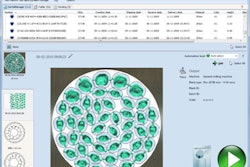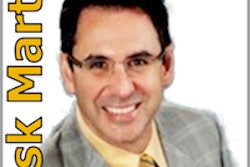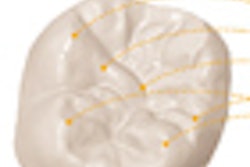
For all the "pros" we hear about digital radiography's ability to improve workflow and productivity in the dental office, it's not often we hear many "cons." But a new study reveals cracks in some claims about the advantages of going digital (Acta Odontologica Scandinavica, March 2010, Vol. 68:2, pp. 106-114).
The systematic review, conducted by Ann Wenzel, D.D.S., Ph.D., of Aarhus University Royal Dental College -- one of the first dental schools in the world to implement digital radiography in routine patient management and teaching, back in 1996, according to Dr. Wenzel -- and Anne Moystad, D.D.S., Ph.D., of University of Oslo, evaluated the six most frequently emphasized advantages of working with digital radiography:
- Less working time
- Lower radiation dose
- Fewer retakes and errors
- Wider dynamic range
- Easier access to patient information
- Easier image storage and communication
Using an unlimited literature search on PubMed from June to August 2009, supplemented by a hand search of task-specific journals -- for a total of more than 80 studies -- Drs. Wenzel and Moystad also considered some of the unexpected clinical aspects of digital imaging that have emerged over time, such as patient discomfort, receptor damage, image degradation, cross-contamination, and viewing conditions.
Surprising findings
The Department of Oral Radiology at Aarhus University routinely uses two phosphor plate (PSP) systems and three CCD/CMOS sensor systems for intraoral exams, Dr. Wenzel noted in an email to DrBicuspid.com. They use the PSP for posterior and bitewing exams and sensors for other areas, combining the techniques for full mouth views. For extraoral exams, they also use both types of systems; in addition, they have three cone-beam CT systems that they use for various applications, including a large field-of-view system for orthodontic patients.
For the lit review, she and Dr. Moystad chose to focus on work flow when using digital receptors for intraoral patient exams and found that "not all of the predicted advantages with digital compared to film-based radiography hold true in daily clinical work."
Of particular interest, they noted, is the relationship between radiation dose and the number of images and retakes.
"One of the claimed advantages of intraoral digital imaging was a reduction in the radiation dose to the patient," they wrote.
Using the search criteria "digital intraoral/periapical AND retake/error," Drs. Wenzel and Moystad found 11 studies, four of which were original research regarding positioning errors with digital receptors. Questionnaire studies involving general practicing dentists showed that those working with digital receptors took more images and did more retakes than dentists working with film (Dentomaxillofacial Radiology, July 2001, Vol. 30:4, pp. 203-208; March 2003, Vol. 32:2, pp. 124-127).
Another study demonstrated that more retakes were needed when periapical radiographs were taken with a CCD sensor compared to film since 6% of the films were retakes versus 28% of the sensor images (Dentomaxillofacial Radiology, March 1998, Vol. 27:2, pp. 97-101). In another, retakes were three times more frequent with a CCD sensor than with film (Dental Hygiene, 2002, Vol. 76, pp. 26-33).
"When the factors frequency of retakes, number of images needed to cover a given area, and dose for a single exposure are combined, it may be speculated whether a dose reduction is obtained when using digital receptors compared with film," the authors wrote.
Retakes play a key role in this, they noted. "It seems that the prediction of fewer retakes with intraoral digital imaging than with film may be false," they wrote. "When positioning errors result in retakes, the time taken and the dose to the patient are obviously increased."
Paul Feuerstein, D.M.D., an adjunct assistant professor at Tufts University School of Dental Medicine, the technology editor for Dental Economics, and the 2010 Yankee Dental Congress Clinician of the Year, agreed. "There are many instances where additional images are taken," he told DrBicuspid.com. "One reason is that the active area of the larger sensor is smaller than the large film. It is not uncommon to need more images to capture everything. There are also retakes, as you see the error immediately and retake it on the spot."
Working time
This lit review also raised some questions about whether digital radiography actually reduces working time. The authors' PubMed search of "time AND digital AND intraoral AND radiograph" yielded 39 studies plus three questionnaire studies; in one of the questionnaire studies, general dentists who had switched to a digital receptor reported that they save about half an hour per day in time spent on radiographic procedures. In another, dental students reported that they save more time when they used a CCD sensor than when they used a photostimulable phosphor (PSP) plate system in connection with root canal treatment.
However, of the 39 quantitative studies, only three evaluated time use, and all generally supported the notion that digital radiography saves time. "Even though there are few studies that have actually timed or estimated the working time with a digital receptor compared to film, it seems reasonable to conclude that time is saved when switching from film to digital imaging in dental practice," Drs. Wenzel and Moystad wrote.
However, they added, no studies have evaluated the time spent on postprocessing and enhancing the digital image before a specific diagnosis is reached -- factors Dr. Feuerstein also noted as affecting the overall time spent working with the images.
"If you factor in the time the dentist spends interpreting, manipulating, and showing them to the patient, the time is actually the same and, in some cases, longer," he said.
Effects on patients
Another surprising finding was that using digital images to help patients visualize and better understand their condition and proposed treatment appears to have little benefit, based on the 27 studies the authors found in their PubMed search of "communicate/inform AND patient AND digital AND radiograph." One of these studies, coauthored by Dr. Wenzel, showed that no additional patient satisfaction with the information was obtained by displaying and explaining the radiographic information to the patient before lower third-molar surgery (Dentomaxillofacial Radiology, March 2010, Vol. 39:3, pp.176-178). However, she and Dr. Moystad noted that more research is needed on this topic.
"This study did not show that digital images give patients more information, but realize that this is a literature search," Dr. Feuerstein said. "I think that all will agree that having a patient see a giant-sized image allows better communication and understanding."
With regard to patient discomfort, digital sensors are thicker than film and most are connected to a computer by a cord that can be stiff and difficult to position, the authors noted. In addition, some phosphor plates are placed in a plastic envelope with sharp edges and their corners cannot be bent. These disadvantages, they wrote, were not considered in early reviews of digital imaging.
While their PubMed search on "digital AND intraoral/bitewing AND discomfort" yielded only six studies, they concluded that "sensors seem to be perceived by patients as being more unpleasant than PSP plates and film for intraoral radiograph examinations." If the patient has difficulties in tolerating the receptor in the mouth, positioning errors may occur, which could result in a higher number of retakes with sensors than with PSP plates, they added.
A revolution
Overall, "changing from analog to digital radiography is a revolution, especially for those who worked for many years with film radiographs," the authors concluded. "Working routines, such as image capture, viewing, and archiving, as well as the quality assurance of the radiographic process, are completely different. ... There seem, however, to be no studies on whether a training phase is more important when starting to work with digital compared to film radiography."
"All in all, this entire article presented many things to think about before we are so pompous in extolling the virtues of digital radiography," Dr. Feuerstein said.
In general, Dr. Wenzel added, clinicians who incorporate digital radiography into their practice should consider what types of examinations they are doing in order to choose the technology that best meets their needs.
"If they mostly take bitewings, life will be easier if they choose a PSP system," she told DrBicuspid.com. "Similarly, if they wish to examine wisdom teeth and don't have a panorama unit, they should use a PSP system. On the other hand, if it is mainly a surgical practice, an intraoral sensor system combined with a panoramic unit may suffice. The large cone beam CT units will, in my opinion, mostly be for radiological specialty practices, which can be referred to by general practitioners on particular indications."
Copyright © 2010 DrBicuspid.com



















